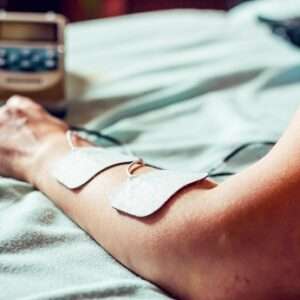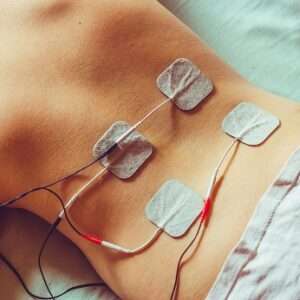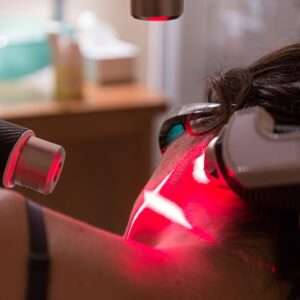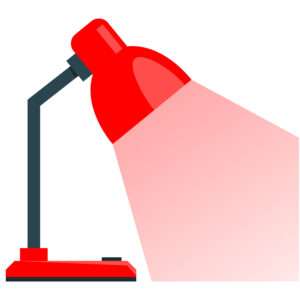The Best 15 Physiotherapy Modalities
Are you tired of feeling like your physiotherapy sessions are more of a chore than a solution? Do you want to elevate your rehab experience and achieve your goals faster? Introducing The Best 15 Physiotherapy Modalities—the answer to all your physiotherapy needs. With cutting-edge technology and state-of-the-art equipment, you can target your specific needs and get the most out of every session. Imagine being able to rehab in style and comfort while reaching your goals faster than ever before.
Table of Contents

Try The Best 15 Physiotherapy Modalities, which will take your rehab routine to the next level. Don’t settle for outdated equipment and a lackluster rehab experience. Take action today and upgrade your sessions with “The Best 15 Physiotherapy Modalities“. Start getting your goals faster and more efficiently than ever – your body will thank you!
Read More Along with The Best 15 Physiotherapy Modalities read more about Infrared Therapy in Physiotherapy, TENS Therapy In Physiotherapy, What is Therapeutic Laser Therapy?, and Therapeutic Ultrasonography, TENS Therapy In Physiotherapy, What is Therapeutic Laser Therapy?, and Therapeutic Ultrasonography, Infrared Therapy in Physiotherapy, What is Therapeutic Laser Therapy?, and Therapeutic Ultrasonography.
Physiotherapy Modalities
Physiotherapy modalities refer to the various techniques and tools physiotherapists use to help individuals recover from injuries or conditions affecting their movement, function, and overall health. These modalities can range from hands-on techniques such as massage and mobilization to advanced technology such as ultrasound and electrical stimulation. Physiotherapy modalities aim to alleviate pain, improve mobility and function, and promote overall health and well-being.
Physiotherapy modalities can be categorized into various types, such as exercise therapy, manual therapy, electrotherapy, heat and cold therapy, and alternative therapies, such as acupuncture and cupping. Each modality has unique benefits and may be appropriate for different conditions or injuries.
Selecting a specific modality depends on the individual’s condition, symptoms, and overall health status. A qualified physiotherapist will perform a thorough assessment to determine the most appropriate modality or combination of modalities to provide the best possible outcome for the individual.
It is important to note that qualified healthcare professionals should only perform Physiotherapy modalities with the necessary training and expertise to ensure the safety and effectiveness of the treatment. If you are experiencing pain, reduced mobility, or other symptoms affecting your quality of life, seek the advice of a qualified physiotherapist to determine the most appropriate modalities for your individual needs of The Best 15 Physiotherapy Modalities.
Definition
Physiotherapy modalities refer to various therapeutic techniques and interventions physiotherapists use to treat various conditions and injuries. These modalities can be applied to different body parts, including muscles, joints, and other tissues, and can help improve physical function, reduce pain, and promote healing. Common Physiotherapy modalities include heat therapy, cold therapy, electrical stimulation, therapeutic exercise, manual therapy, traction, ultrasound therapy, laser therapy, dry needling, cupping therapy, Kinesio taping, and aquatic therapy. The specific modalities used will depend on the patient’s condition and the physiotherapist‘s assessment.
Overview of The Best 15 Physiotherapy Modalities
Various Physiotherapy modalities are commonly used to treat musculoskeletal injuries and conditions. Here’s an overview of The Best 15 Physiotherapy Modalities:
- Overview of electric muscle stimulators
- How they work
- Benefits and limitations
- Top 3 electric muscle stimulators on the market
- Overview of TENS units
- How they work
- Benefits and limitations
- Top 3 TENS units on the market
- Overview of ultrasound Machines
- How they work
- Benefits and limitations
- Top 3 ultrasound Machines on the market
- Overview of cold therapy Machines
- How they work
- Benefits and limitations
- Top 3 cold therapy Machines on the market
5-Heat Therapy Machines
- Overview of heat therapy Machines
- How they work
- Benefits and limitations
- Top 3 heat therapy Machines on the market
6-Compression Therapy Machines
- Overview of compression therapy Machines
- How they work
- Benefits and limitations
- Top 3 compression therapy Machines on the market
7-Inversion Tables
- Overview of inversion tables
- How they work
- Benefits and limitations
- Top 3 inversion tables on the market
- Overview of traction tables
- How they work
- Benefits and limitations
- Top 3 traction tables on the market
- Overview of Laser therapy
- How they work
- Benefits and limitations
- Top 3 Laser Therapy for Physiotherapy
10-Therapeutic Exercise Programs
- Overview of therapeutic exercise programs
- How they work
- Types and examples of therapeutic exercise programs
- Benefits and limitations
- Overview of massage therapy
- How they work
- Techniques and Types of massage therapy
- Benefits and limitations
- Overview of cervical traction devices
- How they work
- Benefits and limitations
- Top 3 cervical traction devices on the market
- Overview of cervical traction devices
- How they work
- Benefits and limitations
- Top 3 Infrared Therapy Machines devices on the market
14-Soft Tissue Release And Massager
- Overview of cervical traction devices
- How they work
- Benefits and limitations
- Top 3 Soft Tissue Release And Massager on the market
15-kinesio Taping
- Overview of cervical traction devices
- How they work
- Benefits and limitations
- Top 3 taping Machines devices on the market
The Best 15 Physiotherapy Modalities can be used alone or in combination to help patients achieve their goals of improved function, decreased pain, and increased quality of life. It’s important to note that the use of these modalities should be determined based on the patient’s condition and the physiotherapist‘s assessment.
Importance of The Best 15 Physiotherapy Modalities
Physiotherapy modalities play an important role in treating various conditions and injuries. Here are some of the key reasons why these modalities are important:
- Promote Healing: Many Physiotherapy modalities promote healing by increasing blood flow, reducing inflammation, and stimulating tissue repair.
- Reduce Pain: Physiotherapy modalities can help to reduce pain by blocking pain signals, reducing inflammation, and promoting relaxation.
- Improve Physical Function: By addressing underlying issues like muscle weakness, joint stiffness, and poor range of motion, Physiotherapy modalities can help to improve physical function and mobility.
- Prevent Recurrence of Injuries: By addressing underlying issues and improving physical function, Physiotherapy modalities can help to prevent the recurrence of injuries.
- Non-Invasive: Most Physiotherapy modalities are non-invasive and do not require surgery or medication, making them a safe and effective treatment option for many patients.
- Customizable: Physiotherapy modalities can be customized to meet each patient’s specific needs, allowing for personalized treatment plans and improved outcomes.
- Cost-Effective: Compared to more invasive treatment options, Physiotherapy modalities are often more cost-effective and can help patients avoid costly surgeries or long-term medication use.
In summary, The Best 15 Physiotherapy Modalities are important in treating many conditions and injuries. They offer a safe, effective, customizable treatment option to help patients recover from injuries, manage chronic pain, and improve their overall physical function and well-being.
Electric Muscle Stimulators
Electric Muscle Stimulators (EMS) use electrical impulses to stimulate muscle contractions, improve muscle strength and range of motion, and reduce pain. In physiotherapy, EMS is commonly used to help patients recovering from injuries or surgery or those with chronic pain or muscle weakness.

The EMS machine is connected to electrodes placed on the skin over the muscle group that needs to be stimulated. The machine delivers electrical impulses to the muscle, causing it to contract and relax rhythmically, similar to during exercise.

Different types of EMS machines can be used in physiotherapy. One type is a transcutaneous electrical nerve stimulation (TENS) machine, designed to stimulate the nerves that carry pain signals to the brain. It can help to reduce pain and promote healing.
Another type of EMS machine is called a neuromuscular electrical stimulation (NMES) machine, which stimulates muscle contractions. It improves tone, reduce muscle spasms, and improve range of motion.
EMS can be combined with other physiotherapy treatments, such as exercise and manual therapy
TENS Units
Transcutaneous Electrical Nerve Stimulation (TENS) is a type of therapy that uses a TENS unit to deliver electrical impulses to the nerves through the skin. TENS is commonly used in physiotherapy to help reduce pain, especially chronic pain.

The TENS unit is a small, battery-operated device that produces electrical pulses. The device is connected to electrodes placed on the skin near the area of pain. The electrical impulses travel through the electrodes and into the nerves, which carry the signals to the brain. The electrical impulses can help interrupt or block the pain signals from reaching the brain, reducing pain sensation.
TENS units can also stimulate the production of endorphins, natural pain-relieving chemicals in the body. The endorphins can help to reduce the perception of pain and promote relaxation.

TENS units can be used for various conditions that cause pain, including arthritis, fibromyalgia, and neuropathy. They can also be used during labour and delivery to help manage pain.
Additionally, TENS units should not be used on specific areas of the body, such as the head or neck, or by individuals with certain medical conditions, such as epilepsy or a pacemaker.
Ultrasound Machines
Ultrasound machines are commonly used in physiotherapy to help reduce pain, inflammation and promote healing of soft tissues. The device produces high-frequency sound waves transmitted through the skin into the body’s tissues.

The ultrasound machine consists of a handheld device called a transducer, connected to the ultrasound machine by a cable. The transducer produces sound waves directed into the body through a special gel applied to the skin over the area of interest. The sound waves penetrate the skin and travel through the underlying tissues, including muscles, tendons, ligaments, and joints.
As the sound waves pass through the tissues, they cause small vibrations that produce heat and mechanical energy. This energy can help to improve blood flow, reduce inflammation, and promote tissue healing. The heat produced by the ultrasound can also help to relax muscles, reduce pain, and increase the range of motion.

The physiotherapist will adjust the settings on the ultrasound machine to ensure that the ultrasound waves’ appropriate frequency, intensity, and duration are used for each patient and condition. The treatment is typically painless, although some patients may feel a slight warming sensation or tingling in the treated area.
Ultrasound therapy is often combined with other physiotherapy treatments, such as exercise and manual therapy.
Cold Therapy Machines
Cold therapy or cryotherapy machines are commonly used in physiotherapy to reduce pain, inflammation, and swelling after an injury or surgery. The device delivers cold water or air to the affected area through a specially designed pad or wrap.

The machine consists of a reservoir that contains cold water or ice and a pump that circulates the water through the pad or wrap. The pad or wrap is wrapped around the affected area, and the cold water is pumped through the pad or wrap, causing it to become cold.
The cold temperature helps constrict blood vessels and reduce blood flow to the affected area, reducing inflammation and swelling. It can also help to numb the site, which can reduce pain.

The physiotherapist will adjust the settings on the machine to ensure that the appropriate temperature and duration of the cold therapy are used for each patient and condition. The treatment is typically painless, although some patients may feel slight discomfort or tingling in the treated area.
Cold therapy is often combined with other physiotherapy treatments, such as exercise and manual therapy.
Heat Therapy Machines
Heat therapy or thermotherapy machines are commonly used in physiotherapy to promote healing, reduce muscle stiffness, and relieve pain. The device delivers heat to the affected area through a specially designed pad or wrap.

The machine consists of a reservoir that contains warm water and a pump that circulates the water through the pad or wrap. The pad or wrap is wrapped around the affected area, and the warm water is pumped through the pad or wrap, causing it to become warm.
The heat therapy machine’s warmth helps increase blood flow to the affected area, promoting healing and reducing muscle stiffness. It can also help to relieve pain by relaxing muscles and reducing muscle spasms.
The physiotherapist will adjust the settings on the machine to ensure that the appropriate temperature and duration of the heat therapy are used for each patient and condition. The treatment is typically painless, although some patients may feel a slight warming sensation in the treated area.
Heat therapy is often combined with other physiotherapy treatments, such as exercise and manual therapy, to help patients recover from injuries and improve their overall physical function.
Compression Therapy Machines
Compression therapy machines are commonly used in physiotherapy to improve circulation, reduce swelling, and promote healing of the affected area. The device applies pressure to the affected area through a specially designed sleeve or wrap.

The machine has an air compressor and a sleeve or wraps around the affected area. The air compressor fills the sleeve or covers it with air, causing it to apply pressure to the affected area. The pressure is typically graduated, meaning it is higher at the foot or ankle and gradually decreases as it moves up the leg or arm.
The pressure from the compression therapy machine helps to improve circulation by increasing the pressure in the veins, which can help to reduce swelling and promote healing. It can also help to reduce the risk of blood clots and deep vein thrombosis.
The physiotherapist will adjust the settings on the machine to ensure that the appropriate pressure and duration of the compression therapy are used for each patient and condition. The treatment is typically painless, although some patients may feel a slight pressure sensation in the treated area.
Compression therapy is often combined with other physiotherapy treatments, such as exercise and manual therapy, to help patients recover from injuries and improve their overall physical function.
Laser Therapy Machines
Laser therapy machines, or low-level laser therapy (LLLT) machines, are commonly used in physiotherapy to promote healing, reduce pain and inflammation, and improve tissue repair. The device works by delivering low-level laser energy to the affected area.

The machine consists of a handheld device that emits low-level laser energy. The device is placed directly on the affected area, and the laser energy penetrates the skin and is absorbed by the cells in the affected tissue.
Laser energy helps to stimulate cellular metabolism, which can improve tissue repair and reduce inflammation. It can also help increase blood flow to the affected area, promoting healing and reducing pain.
The physiotherapist will adjust the settings on the machine to ensure that the appropriate laser energy intensity, frequency, and duration are used for each patient and condition. The treatment is typically painless, although some patients may feel a slight warming or tingling sensation in the treated area.

Laser therapy is often used with other physiotherapy treatments, such as exercise and manual therapy, to help patients recover from injuries and improve their overall physical function.
Infrared Therapy Machines
Infrared therapy machines, also known as infrared light therapy or phototherapy machines, are commonly used in physiotherapy to promote healing, reduce pain, and improve circulation. The device works by delivering infrared light energy to the affected area.

The machine consists of a handheld device that emits infrared light energy. The device is placed directly on the affected area, and the light energy penetrates the skin and is absorbed by the cells in the affected tissue.
The infrared light energy helps to stimulate cellular metabolism, which can improve tissue repair and reduce inflammation. It can also help increase blood flow to the affected area, promoting healing and reducing pain.

The physiotherapist will adjust the settings on the machine to ensure that the appropriate intensity, frequency, and duration of the infrared therapy are used for each patient and condition. The treatment is typically painless, although some patients may feel a slight warming or tingling sensation in the treated area.
Infrared therapy is often combined with other physiotherapy treatments, such as exercise and manual therapy, to help patients recover from injuries and improve their overall physical function.
Therapeutic Exercise Programs
Therapeutic exercise programs are a vital component of physiotherapy and are used to help patients recover from injuries or illnesses, improve their physical function, and prevent future injuries. These exercise programs are tailored to the patient’s needs, abilities, and goals.

The physiotherapist will design a therapeutic exercise program for the patient based on their assessment, including strength, range of motion, flexibility, balance, and coordination tests. The program will then be customized to address specific impairments or functional limitations.
The exercise program may include a variety of exercises, such as resistance training, stretching, aerobic exercise, balance and coordination training, and functional training. The physiotherapist will teach the patient how to perform each exercise correctly and safely with proper intensity, duration, and difficulty as the patient progresses.
The goals of therapeutic exercise programs may include:
- Reducing pain and inflammation.
- Improving strength and flexibility.
- Increasing range of motion.
- Improving balance and coordination.
- Enhancing overall physical function.
The physiotherapist will monitor the patient’s progress and adjust the exercise program as needed to ensure that the patient is progressing toward their goals.
Therapeutic exercise programs are often combined with other physiotherapy treatments, such as manual therapy, modalities, and education. Depending on the patient’s needs and abilities, they can be performed in a clinical setting or at home. It’s important to note that therapeutic exercise programs should only be conducted under the guidance of a trained healthcare professional to ensure safety and effectiveness.
Massage Therapy Machine
Massage therapy machines are commonly used in physiotherapy to help patients recover from injuries, reduce pain and inflammation, and improve circulation. These machines work by applying pressure and vibration to the affected area, which can help to relax tight muscles, promote blood flow, and enhance tissue repair.

The machine typically consists of a handheld device that uses a motorized roller or vibration mechanism to deliver pressure and vibration to the affected area. The physiotherapist will adjust the settings on the machine to ensure that the appropriate intensity, frequency, and duration of the massage therapy are used for each patient and condition.
The massage therapy machine can target specific body areas, such as the back, neck, or legs, or it can be used for a full-body massage. The device can be combined with other physiotherapy treatments, such as heat or cold therapy, to enhance the effects of the treatment.

The massage therapy machine can be used for various types of massage, including deep tissue, trigger point, and Swedish. The physiotherapist will determine which type of massage is appropriate for each patient based on their needs and goals.
Massage therapy machines are often part of a comprehensive physiotherapy treatment plan that includes exercise, manual therapy, and other modalities.
Traction Machine
Traction machines are commonly used in physiotherapy to treat spinal conditions, such as herniated discs, degenerative disc disease, and spinal stenosis. The device works by applying a pulling force to the spine, which can help to reduce pressure on the affected discs and nerves.
The traction machine typically consists of a motorized device that pulls on the patient’s body using a harness or a specialized table. The pulling force is applied gradually, and the physiotherapist will adjust the settings on the machine to ensure that the appropriate amount of traction force is used for each patient and condition.
During the treatment, the patient lies on their back or stomach, and the traction machine is applied to the affected area. The pulling force can help to elongate the spine, reduce pressure on the discs, and improve circulation to the affected area.
The physiotherapist will monitor the patient’s response to the treatment and adjust the settings on the machine as needed. The treatment duration and frequency will vary depending on the patient’s needs and goals.
Traction machines are often combined with other physiotherapy treatments, such as exercise, manual therapy, and modalities, to help patients recover from spinal conditions and improve their overall physical function.
Soft Tissue Release And Massager
Soft tissue release and massager machines are commonly used in physiotherapy to help patients recover from soft tissue injuries and reduce muscle tension and pain. These machines work by applying pressure and vibration to the affected area, which can help to release stress and improve circulation.
Soft tissue release techniques involve applying pressure to specific points on the affected muscle or connective tissue while the patient moves a muscle through a range of motion. This technique aims to help release adhesions or tight spots within the muscle or connective tissue.
Massager machines use vibration and percussion to help relax tight muscles and improve circulation. These machines typically have a handheld device with various attachments, such as balls or nodes, that can target specific body areas.
During the treatment, the physiotherapist will use the soft tissue release or massager machine to apply pressure or vibration to the affected area. The physiotherapist will adjust the settings on the device to ensure that the appropriate intensity, frequency, and duration of the treatment are used for each patient and condition.
Soft tissue release and massager machines can target specific areas of the body, such as the back, neck, or legs, or they can be used for a full body massage. The machines can be combined with other physiotherapy treatments, such as heat or cold therapy, to enhance the effects of the treatment.
Soft tissue release and massager machines are often part of a comprehensive physiotherapy treatment plan that includes exercise, manual therapy, and other modalities.
Kinesio Taping
Kinesio taping is a therapeutic technique involving specialized tape to support and stabilize muscles and joints during movement. Kinesio taping machines are not typically used in physiotherapy as the method relies on the physiotherapist’s manual tape application.
The Kinesio tape is a thin, elastic cotton tape applied to the skin over the affected area in a specific pattern to support the muscles and joints. The tape mimics the body’s natural movement, allowing the patient to move freely while providing support and stability.
During the application of the tape, the physiotherapist will stretch and apply the tape to the affected area, providing support and stability to the muscles and joints. The tape is typically left on for several days and can be worn during exercise and other activities.
The Kinesio tape is believed to work by lifting the skin and fascia away from the underlying muscle and joint, which can help to reduce pressure and inflammation in the affected area. It can also help improve circulation and lymphatic flow, further aiding healing.
Kinesio taping is often part of a comprehensive physiotherapy treatment plan that includes exercise, manual therapy, and other modalities. It’s important to note that a trained healthcare professional should only do Kinesio taping to ensure safety and effectiveness.
Iontophoresis Machines
Iontophoresis is a non-invasive physiotherapy technique that uses a specialized iontophoresis machine to deliver medication through the skin using an electrical current. This technique commonly treats musculoskeletal and dermatological conditions, including inflammation, pain, and excessive sweating.
The iontophoresis machine works by delivering a low-level electrical current to the affected area of the skin. The current is applied through two electrodes, one soaked in a medication solution. The medication is then transported through the skin and into the underlying tissues, which can help reduce inflammation and pain.
The specific settings on the iontophoresis machine, including the duration and intensity of the electrical current and the type and concentration of the medication solution used, will depend on the patient’s condition and the physiotherapist’s recommendations.
Iontophoresis is considered a safe and effective treatment option for various conditions, but it is not appropriate for everyone. Patients with certain medical conditions, such as pacemakers, should not undergo iontophoresis treatment. It is essential to consult with a qualified healthcare professional before undergoing iontophoresis treatment to determine whether it is suitable for your condition.
Inversion Tables
Inversion tables are a type of physiotherapy equipment that is used to treat back pain and other spinal conditions. These machines allow the patient to hang upside down at an inverted angle, which can help decompress the spine and reduce pressure on the spinal discs.
When the body is in an inverted position, gravity helps elongate the spine, reducing pressure on the discs and nerves that run through the spinal column. It can help to alleviate pain and improve range of motion in the back.
Inversion tables typically have a padded backrest and ankle supports that hold the patient securely in place while in the inverted position. The angle of inversion can be adjusted based on the patient’s needs, and the duration of each session can vary depending on the physiotherapist’s recommendations.
Inversion tables are inappropriate for everyone, particularly patients with certain medical conditions such as high blood pressure, glaucoma, or heart disease. It is essential to consult with a qualified healthcare professional before using an inversion table to determine if it is a suitable treatment option for your condition. Additionally, inversion tables should only be used under the guidance of a qualified physiotherapist to ensure safety and effectiveness.
Benefits of Using The Best 12 Physiotherapy Modalities
There are numerous benefits of using Physiotherapy modalities as part of a comprehensive treatment plan for individuals experiencing pain, reduced mobility, or other symptoms related to a musculoskeletal condition or injury. Some of the key benefits of The Best 15 Physiotherapy Modalities include:
- Pain relief: Many physiotherapy modalities, such as heat and cold therapy, ultrasound, and electrical stimulation, effectively reduce pain and discomfort associated with various conditions.
- Improved mobility and function: Exercise therapy and manual therapy techniques, such as joint mobilization and soft tissue massage, can help to improve joint mobility, muscle strength, and overall function.
- Quicker recovery: By combining various physiotherapy modalities, healthcare professionals can create a personalized treatment plan that can help individuals recover more quickly from injuries and conditions.
- Non-invasive: Many Physiotherapy modalities are non-invasive and do not require surgery or medications, making them a safe and effective alternative for individuals who may not be suitable for more invasive treatment options.
- Customizable: Physiotherapy modalities can be customized to meet the specific needs of each individual. By tailoring the treatment plan to the individual’s condition, symptoms, and overall health status, healthcare professionals can provide a more effective treatment that is more likely to produce positive outcomes.
- Cost-effective: Physiotherapy modalities can be a cost-effective alternative to more invasive treatments, such as surgery or medication.
- Improved quality of life: By reducing pain, improving mobility, and promoting overall health and well-being, Physiotherapy modalities can help individuals enjoy a better quality of life.
In summary, The Best 15 Physiotherapy Modalities offer numerous benefits for individuals who are experiencing pain, reduced mobility, or other symptoms related to a musculoskeletal condition or injury. You can experience improved pain relief, mobility, and overall function, leading to a better quality of life.
Conclusion-The Best 15 Physiotherapy Modalities
In summary, The Best 15 Physiotherapy Modalities offer numerous benefits for a wide range of conditions and individuals. These modalities can help to reduce pain, improve mobility and function, promote tissue healing, and promote overall health and wellness. Working with a qualified healthcare professional to develop a personalized treatment plan incorporating the most effective modalities is the best way to achieve optimal outcomes and improve overall health and well-being. The Best 15 Physiotherapy Modalities are:
- Therapeutic exercise programs
- Massage therapy
- Cervical traction devices
- Transcutaneous electrical nerve stimulation (TENS)
- Ultrasound therapy
- Heat therapy
- Cold therapy
- Hydrotherapy
- Electrical muscle stimulation (EMS)
- Therapeutic ultrasound
- Low-level laser therapy (LLLT)
- Acupuncture
Each modality has unique benefits and limitations and may be more or less appropriate for different individuals and conditions. With the proper use of The Best 15 Physiotherapy Modalities, individuals can achieve improved pain management, increased mobility and function, and a better quality of life.
Frequently Asked Questions
Q: What are The Best 15 Physiotherapy Modalities for treating back pain?
Ans: The Best 15 Physiotherapy Modalities for treating back pain will depend on the specific cause and severity. However, some of the most effective modalities for back pain include exercise therapy, manual therapy, and electrotherapy modalities such as ultrasound and electrical stimulation.
Q: Can Physiotherapy modalities be used to treat sports injuries?
Ans: Yes,The Best 15 Physiotherapy Modalities often treat sports injuries such as sprains, strains, and muscle tears. Exercise therapy, manual therapy, and electrotherapy modalities such as ultrasound and laser therapy can all effectively promote healing and reduce pain associated with sports injuries.
Q: How long does it take to see results from physiotherapy modalities?
Ans: The time it takes to see results from Physiotherapy modalities will depend on the specific modality being used and the individual’s condition or injury. Some modalities, such as heat and cold therapy, can provide immediate pain relief, while others, such as exercise therapy, may take several weeks or months to produce significant results.
Q: Are Physiotherapy modalities safe? The Best 15 Physiotherapy Modalities?
Ans: When performed by qualified healthcare professionals, The Best 15 Physiotherapy Modalities are generally considered safe. However, like any medical treatment, some potential risks and side effects are associated with certain modalities. It is important to discuss any concerns with your physiotherapist and follow their instructions carefully regarding The Best 15 Physiotherapy Modalities.
Q: How many sessions of Physiotherapy modalities will I need?
Ans: The number of The Best 15 Physiotherapy Modalities needed will depend on the specific modality used and the individual’s condition or injury. Your physiotherapist will create a personalized treatment plan that may include multiple modalities and guide the number of sessions needed.
Q: Can The Best 15 Physiotherapy Modalities be used in combination with other treatments?
Ans: Yes, The Best 15 Physiotherapy Modalities can be used in combination with other treatments such as medication, surgery, or chiropractic care. A combination of treatments is often the most effective treatment for certain conditions or injuries. Discussing any potential interactions or concerns with your healthcare team is important.

2 Responses